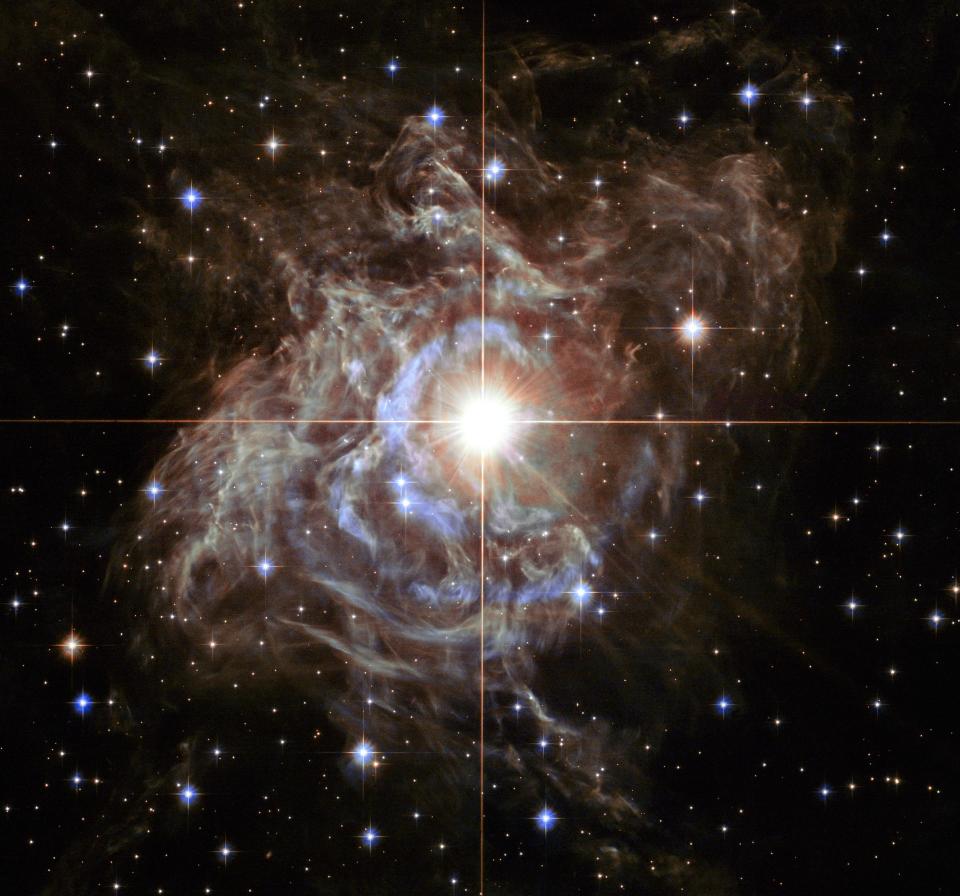When you buy through links on our articles, Future and its syndication partners may earn a commission.

New measurements taken with the James Webb Space Telescope (JWST) have deepened the scientific controversy of the Hubble tension — suggesting it may not exist at all.
For years, astronomers have found that the universe appears to be expanding at different speeds depending on where they look, a conundrum they call the Hubble tension. Some of the measurements agree with our best current understanding of the universe, while others threaten to break it.
When JWST came online in 2022, one team of researchers used the space telescope’s unprecedented accuracy to confirm the tension exists. But according to the new results from a different team of scientists, the Hubble tension may arise from measurement error and be an illusion after all. Yet even these results are not definitive.
“Our results are consistent with the standard model. But they don’t rule out that there’s a tension there too,” study lead author Wendy Freedman, an astrophysicist at the University of Chicago, told Live Science. “[The experience] is probably the closest thing to a rollercoaster — it’s been exciting, but there are these moments when you’ve got to climb the hill again.”
Hubble trouble
Currently, there are two gold-standard methods for figuring out the Hubble constant, a value that describes the expansion rate of the universe. The first involves poring over tiny fluctuations in the cosmic microwave background — an ancient relic of the universe’s first light produced just 380,000 years after the Big Bang.
Related: ‘It could be profound’: How astronomer Wendy Freedman is trying to fix the universe
After mapping out this microwave hiss using the European Space Agency’s Planck satellite, cosmologists inferred a Hubble constant of roughly 46,200 mph per million light-years, or around 67 kilometers per second per megaparsec (km/s/Mpc). This, alongside other measurements of the early universe, aligned with theoretical predictions.
The second method operates at closer distances and in the universe’s later life using pulsating stars called Cepheid variables. Cepheid stars are slowly dying, and their outer layers of helium gas grow and shrink as they absorb and release the star’s radiation, making them periodically flicker like distant signal lamps.
As Cepheids get brighter, they pulsate more slowly, enabling astronomers to measure the stars’ intrinsic brightness. By comparing this brightness to their observed brightness, astronomers can chain Cepheids into a “cosmic distance ladder” to peer ever deeper into the universe’s past.


Recently, when Adam Riess, a professor of astronomy at Johns Hopkins University, and his team measured the Hubble constant using the Hubble Space Telescope and JWST, they found a puzzlingly high value of 73.2 km/s/Mpc. Hence the tension, a significant discrepancy between methods measuring the expansion rate in the early universe and those in the more modern one, was cemented.
But Freedman previously suggested that dust, gas and other stars could be throwing off the brightness measurements of the Cepheids, creating the appearance of a discrepancy where there isn‘t one at all.
In the new study, to tease out a possible systematic error in Cepheid crowding, Freedman and her colleagues trained JWST on 11 nearby galaxies containing Type Ia supernovae, measuring their distances and anchoring them to three independent distance ladders with intrinsic brightnesses in similar regions of the sky: the Cepheids; and two other standard candle red giant stars known as “tip-of-the-red-giant-branch” (TRGB) stars and J-region asymptotic giant branch (JAGB) stars.
Their results were puzzling. The TRGB and JAGB stars gave Hubble constant results of 69.85 km/s/Mpc and 67.96 km/s/Mpc, respectively. But the Cepheids returned 72.04 km/s/Mpc, replicating the Hubble tension — albeit less dramatically than the results made by Riess. To Freedman and her colleagues, this is a possible hint that the Cepheid measurements could contain some unknown systematic error.
The end of Hubble tension?
Yet not all scientists agree with the study’s conclusions. When asked about the new findings, Riess suggested the mismatched results could be because Freedman and her team’s sample was too small.
“They get a lower Hubble constant because the sample they selected gives a lower Hubble constant, regardless of whether you measure with JWST or HST [Hubble Space Telescope], or Cepheids, JAGB or TRGB, because the supernovae in the hosts they selected fluctuate that way,” Riess told Live Science. “They chose a very small sample … and they chose these from the tail, not the middle of the distribution.”
But Freedman countered this point. Although the sample might be too small to account for the full range of star distances, she said, the results also may mean the measurements of the more distant Cepheid stars contain a “fatal” systematic error — a crowding that is throwing off the calculations of the Cepheid distances.
To make a measurement of Cepheid stars, “you’re making a crowding correction, and they’re not small corrections,” Freedman said. “And if you get that wrong, you get the [star] colors wrong, you get the dust correction wrong, you get the metallicity correction wrong. These effects are covariant, and they could have a much bigger effect [on the final distance measured] than just saying that crowding is not a problem.”
RELATED STORIES
—After 2 years in space, the James Webb telescope has broken cosmology. Can it be fixed?
—James Webb telescope discovers oldest black hole in the universe
—8 stunning James Webb Space Telescope discoveries made in 2023
Freedman believes the answer is to make even more measurements, potentially some with an additional type of star. She expects this work to be completed in the next two years. Yet whether additional measurements will resolve the problem or add to it is debated.
“We’re in the midst of this, and there’s more to come,” Freedman said. “[JWST] is a marvelous machine, and it’s exactly what we need to get at some of these kinds of issues. It’s a good time to be working on this.”
